Imagine a cozy evening at home, surrounded by the comforting aromas of a homemade meal. Picture rolling dough between your hands, feeling the soft texture and the promise of a delicious dish coming to life. It’s time to step into the world of fresh pasta, where simple ingredients transform into a culinary masterpiece, and every bite tells a story of tradition and craftsmanship. In recent years, the art of making fresh pasta has seen a resurgence in popularity as home cooks rediscover the joy of creating dishes from scratch. Gone are the days when pasta was just another convenience food; today, it is a labor of love, a way to connect with one’s food and heritage, and a delightful culinary adventure waiting to unfold in your kitchen. One of the most remarkable aspects of fresh pasta is its simplicity. With just a few basic ingredients – flour, eggs, and a touch of salt – you can create a dough that will become the canvas for a myriad of pasta shapes and flavors. The process of making fresh pasta may seem intimidating at first, but with a bit of practice and patience, you’ll soon find yourself effortlessly rolling out silky sheets of dough and shaping them into delicate strands or intricate ravioli.
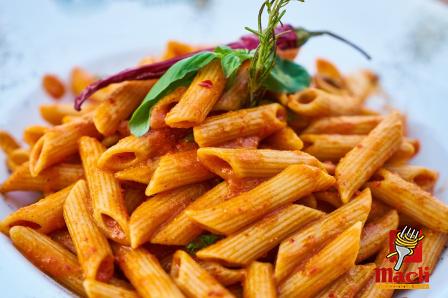
.
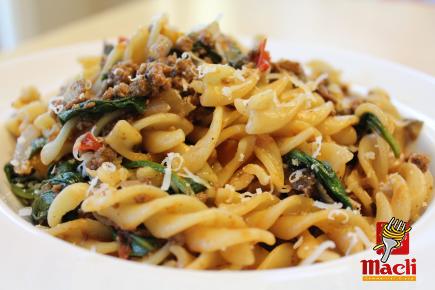 The magic of fresh pasta lies in its texture. Unlike dried pasta, which can sometimes be frustratingly rubbery or mushy, fresh pasta has a supple, tender bite that elevates every dish it graces. Whether tossed in a simple tomato sauce, dressed with olive oil and herbs, or layered into a rich lasagna, fresh pasta brings a depth of flavor and a luxurious mouthfeel that store-bought varieties simply can’t match. But fresh pasta is not just about taste and texture – it’s also about the experience of creating something beautiful with your own hands. There is a meditative quality to kneading dough, rolling it out, and shaping it into intricate forms. Each step in the pasta-making process requires attention to detail and a gentle touch, turning a simple act of cooking into a form of artistry. One of the joys of making fresh pasta at home is the endless variety of shapes and styles you can create. From the classic fettuccine and spaghetti to the more intricate tortellini and agnolotti, fresh pasta allows you to explore the rich tapestry of Italian culinary traditions and experiment with your own flavor combinations. Mix in some spinach for vibrant green pasta, add squid ink for a striking black hue, or infuse the dough with herbs and spices for an extra layer of complexity – the possibilities are as vast as your imagination. And let’s not forget about the sauces that pair so perfectly with fresh pasta. Whether you prefer a simple butter and Parmesan sauce, a rich ragù simmered for hours, or a light, lemony cream sauce, fresh pasta provides the ideal canvas for showcasing the flavors of your favorite ingredients. The porous texture of fresh pasta allows sauces to cling to every strand or fold, ensuring that each bite is a harmonious blend of pasta and sauce, texture and flavor.
The magic of fresh pasta lies in its texture. Unlike dried pasta, which can sometimes be frustratingly rubbery or mushy, fresh pasta has a supple, tender bite that elevates every dish it graces. Whether tossed in a simple tomato sauce, dressed with olive oil and herbs, or layered into a rich lasagna, fresh pasta brings a depth of flavor and a luxurious mouthfeel that store-bought varieties simply can’t match. But fresh pasta is not just about taste and texture – it’s also about the experience of creating something beautiful with your own hands. There is a meditative quality to kneading dough, rolling it out, and shaping it into intricate forms. Each step in the pasta-making process requires attention to detail and a gentle touch, turning a simple act of cooking into a form of artistry. One of the joys of making fresh pasta at home is the endless variety of shapes and styles you can create. From the classic fettuccine and spaghetti to the more intricate tortellini and agnolotti, fresh pasta allows you to explore the rich tapestry of Italian culinary traditions and experiment with your own flavor combinations. Mix in some spinach for vibrant green pasta, add squid ink for a striking black hue, or infuse the dough with herbs and spices for an extra layer of complexity – the possibilities are as vast as your imagination. And let’s not forget about the sauces that pair so perfectly with fresh pasta. Whether you prefer a simple butter and Parmesan sauce, a rich ragù simmered for hours, or a light, lemony cream sauce, fresh pasta provides the ideal canvas for showcasing the flavors of your favorite ingredients. The porous texture of fresh pasta allows sauces to cling to every strand or fold, ensuring that each bite is a harmonious blend of pasta and sauce, texture and flavor.
..
 Of course, making fresh pasta from scratch does require a bit of time and effort, but the rewards are more than worth it. The satisfaction of creating something delicious with your own hands, the pleasure of sharing a homemade meal with loved ones, the sense of accomplishment that comes from mastering a craft – these intangible benefits far outweigh the minor inconveniences of kneading, rolling, and shaping dough. So, why not take a leap into the world of fresh pasta and experience the joy of cooking for yourself? Gather your ingredients, clear some space on your countertop, and embark on a culinary adventure that will delight your senses and nourish your soul. With a bit of practice and a lot of love, you’ll soon be crafting fresh pasta masterpieces that rival those of the most talented chefs. Bon appétit! As you embark on your fresh pasta-making journey, there are a few tips and tricks that can help you achieve pasta perfection every time. First and foremost, it’s essential to use the right type of flour. Look for “00” flour, which is finely ground and low in gluten, resulting in a silky-smooth dough that is easy to work with. If you can’t find “00” flour, all-purpose flour will suffice, but be prepared for a slightly different texture. When it comes to the eggs, opt for the freshest ones you can find. Eggs are not only an essential ingredient for providing structure and richness to the dough but also contribute to the vibrant color and robust flavor of the finished pasta. If possible, use free-range or organic eggs for the best results. Another key factor in successful pasta-making is the kneading process. While it may be tempting to rush through this step, take your time to knead the dough properly. The goal is to develop the gluten in the flour just enough to give the pasta structure without making it tough. Use the heels of your hands to push and fold the dough, rotating and flipping it periodically to ensure even kneading. Once your dough is smooth and elastic, it’s time to let it rest. This step is crucial for allowing the gluten to relax and the flour to fully hydrate. Cover the dough with a clean kitchen towel or plastic wrap and let it rest at room temperature for at least 30 minutes, or up to an hour, to ensure a pliable and workable texture. When it comes to rolling out the dough, the key is to start thin and work your way to the desired thickness gradually. If you have a pasta machine, use it to help you achieve a uniform thickness and shape.
Of course, making fresh pasta from scratch does require a bit of time and effort, but the rewards are more than worth it. The satisfaction of creating something delicious with your own hands, the pleasure of sharing a homemade meal with loved ones, the sense of accomplishment that comes from mastering a craft – these intangible benefits far outweigh the minor inconveniences of kneading, rolling, and shaping dough. So, why not take a leap into the world of fresh pasta and experience the joy of cooking for yourself? Gather your ingredients, clear some space on your countertop, and embark on a culinary adventure that will delight your senses and nourish your soul. With a bit of practice and a lot of love, you’ll soon be crafting fresh pasta masterpieces that rival those of the most talented chefs. Bon appétit! As you embark on your fresh pasta-making journey, there are a few tips and tricks that can help you achieve pasta perfection every time. First and foremost, it’s essential to use the right type of flour. Look for “00” flour, which is finely ground and low in gluten, resulting in a silky-smooth dough that is easy to work with. If you can’t find “00” flour, all-purpose flour will suffice, but be prepared for a slightly different texture. When it comes to the eggs, opt for the freshest ones you can find. Eggs are not only an essential ingredient for providing structure and richness to the dough but also contribute to the vibrant color and robust flavor of the finished pasta. If possible, use free-range or organic eggs for the best results. Another key factor in successful pasta-making is the kneading process. While it may be tempting to rush through this step, take your time to knead the dough properly. The goal is to develop the gluten in the flour just enough to give the pasta structure without making it tough. Use the heels of your hands to push and fold the dough, rotating and flipping it periodically to ensure even kneading. Once your dough is smooth and elastic, it’s time to let it rest. This step is crucial for allowing the gluten to relax and the flour to fully hydrate. Cover the dough with a clean kitchen towel or plastic wrap and let it rest at room temperature for at least 30 minutes, or up to an hour, to ensure a pliable and workable texture. When it comes to rolling out the dough, the key is to start thin and work your way to the desired thickness gradually. If you have a pasta machine, use it to help you achieve a uniform thickness and shape.
…
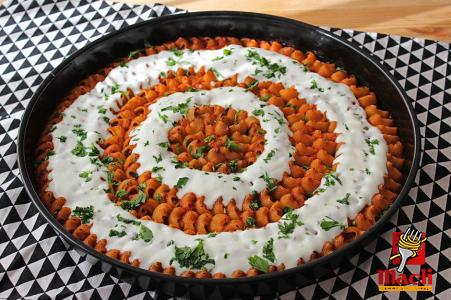 Begin by passing the dough through the widest setting, then gradually move to narrower settings until you reach the desired thickness for your pasta shape. If you don’t have a pasta machine, fear not – you can still roll out the dough by hand using a rolling pin. Divide the dough into smaller portions and work with one piece at a time, keeping the rest covered to prevent drying out. Roll out the dough on a lightly floured surface, turning it frequently to maintain an even thickness. When it comes to shaping the pasta, the possibilities are endless. For long shapes like spaghetti or fettuccine, use a pasta cutter or knife to slice the rolled-out dough into thin strips. For filled pasta shapes like ravioli or tortellini, place spoonfuls of filling on one sheet of dough, brush with water around the edges, and top with another sheet of dough before cutting into individual pieces. Cooking fresh pasta is a quick and simple process, as it only takes a few minutes to cook to al dente perfection. Bring a large pot of generously salted water to a rolling boil, add the fresh pasta, and cook until it floats to the surface, indicating that it’s done. Taste a piece for doneness – it should have a slight bite to it, with no raw flour taste. Once your fresh pasta is cooked, drain it quickly and toss it with your favorite sauce. Remember that fresh pasta cooks much faster than dried pasta, so be prepared to serve it immediately to enjoy it at its peak of freshness and flavor. In conclusion, fresh pasta is more than just a dish – it’s a labor of love, a creative outlet, and a culinary adventure waiting to unfold in your kitchen. So, next time you’re in the mood for a truly special meal, why not try your hand at making fresh pasta from scratch? The rewards are endless, and the satisfaction of creating something delicious with your own two hands is truly priceless. Embrace the art of fresh pasta-making and elevate your home cooking to gourmet heights. Buon appetito!
Begin by passing the dough through the widest setting, then gradually move to narrower settings until you reach the desired thickness for your pasta shape. If you don’t have a pasta machine, fear not – you can still roll out the dough by hand using a rolling pin. Divide the dough into smaller portions and work with one piece at a time, keeping the rest covered to prevent drying out. Roll out the dough on a lightly floured surface, turning it frequently to maintain an even thickness. When it comes to shaping the pasta, the possibilities are endless. For long shapes like spaghetti or fettuccine, use a pasta cutter or knife to slice the rolled-out dough into thin strips. For filled pasta shapes like ravioli or tortellini, place spoonfuls of filling on one sheet of dough, brush with water around the edges, and top with another sheet of dough before cutting into individual pieces. Cooking fresh pasta is a quick and simple process, as it only takes a few minutes to cook to al dente perfection. Bring a large pot of generously salted water to a rolling boil, add the fresh pasta, and cook until it floats to the surface, indicating that it’s done. Taste a piece for doneness – it should have a slight bite to it, with no raw flour taste. Once your fresh pasta is cooked, drain it quickly and toss it with your favorite sauce. Remember that fresh pasta cooks much faster than dried pasta, so be prepared to serve it immediately to enjoy it at its peak of freshness and flavor. In conclusion, fresh pasta is more than just a dish – it’s a labor of love, a creative outlet, and a culinary adventure waiting to unfold in your kitchen. So, next time you’re in the mood for a truly special meal, why not try your hand at making fresh pasta from scratch? The rewards are endless, and the satisfaction of creating something delicious with your own two hands is truly priceless. Embrace the art of fresh pasta-making and elevate your home cooking to gourmet heights. Buon appetito!


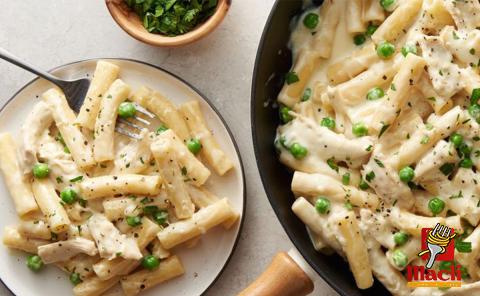


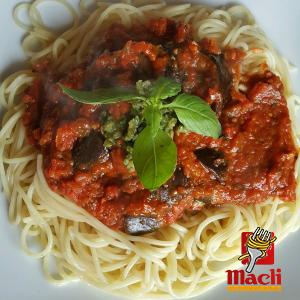
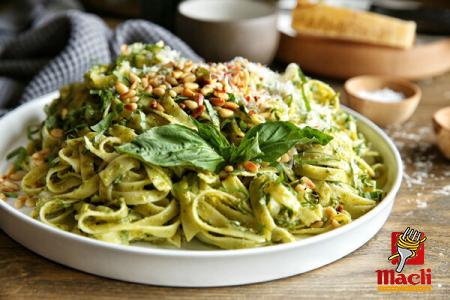
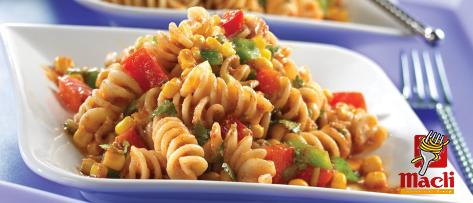
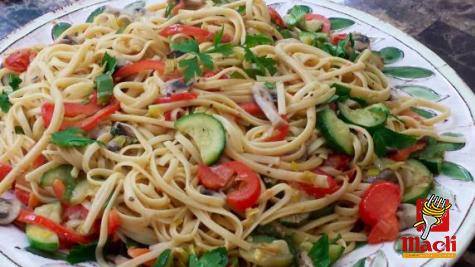
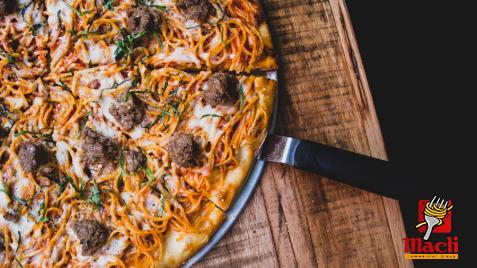
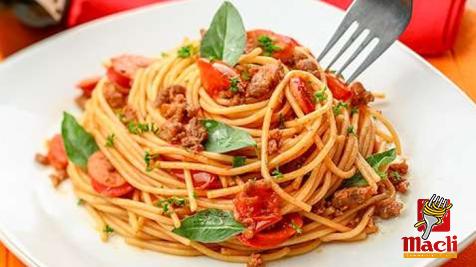
Your comment submitted.